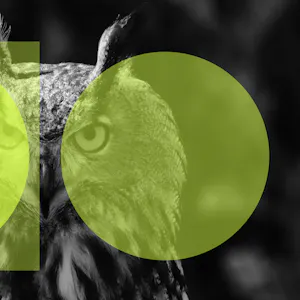Business Continuity Management Systems


PGI’s Digital Investigations Team brings you the Digital Threat Digest, SOCMINT and OSINT insights into disinformation, influence operations, and online harms.

I recently came back from a trip to northern France where I enjoyed la belle vie – watching rugby, eating good food, and drinking wine. I also used the trip as an excuse to brush up on my French, and in doing so decided to read Albert Camus’ classic work of literature, La Peste. The book tells the story of life in the small Algerian town of Oran which suddenly experiences a plague epidemic as thousands of dead rats begin to appear in the streets. This plague subsequently triggers a social hysteria and media frenzy which forces the local authorities to take drastic measures.
In what feels like an uncanny coincidence, towards the end of my trip I noticed that my social media feeds were being flooded by videos of bedbugs crawling around Paris – popping up in hotel rooms, restaurants, and metro trains – and clips of streets filled with old bedbug-ridden furniture. Over the past couple of weeks, the British media has picked up on this story, dubbing it a bedbug ‘outbreak’ and warning of a possible cross-channel infestation. In response, the French government has formed an emergency committee to come up with an action plan to tackle the bugs, terrified that the issue could seriously tarnish Paris’ image ahead of the 2024 summer Olympics.
While experts have tracked a recent surge in bedbugs in France, entomologists across the world have noted that this is a fairly normal trend, exacerbated by the summer tourism season and a return to pre-Covid levels of international travel. While certainly not pleasant and something governments should be concerned about, bedbugs have likely always been in Paris in similar quantities and are likely just as prevalent in London and New York.
In La Peste, Camus highlights the existential anguish created by the knowledge of the plague’s presence – focusing on the response of Oran’s citizens rather than on the plague’s devastating effects. A similar online angst can be witnessed with the bedbug crisis, with social media serving as a magnifying glass, intensifying our awareness of the issue and reinforcing our fears – generating hysteria. It creates a cognitive salience bias whereby we focus on the information which is remarkable and easily attainable, furthering a self-fulfilling cycle. The same phenomenon could be seen in 2020 with the brief global toilet paper shortage. While individuals were not wrong in their assumptions regarding potential pandemic-related supply chain disruptions, the panic and frenzy was magnified by social media, which in turn further intensified the empty shelf experience.
While the aforementioned examples of this phenomenon are relatively innocuous, the same dynamics are fundamental to the spread of online disinformation. The proliferation of a false narrative is most successful when it exploits heightened societal anxiety and confusion, leading to a natural amplification by authentic online users. While I do not wish to be labelled as a bedbug conspiracy theorist, social media often masks the reality of a situation, sensationalising the truth, and making it ever-more important for a reasoned, rational, and fact-based approach to news and information.
More about Protection Group International's Digital Investigations
Our Digital Investigations Analysts combine modern exploitative technology with deep human analytical expertise that covers the social media platforms themselves and the behaviours and the intents of those who use them. Our experienced analyst team have a deep understanding of how various threat groups use social media and follow a three-pronged approach focused on content, behaviour and infrastructure to assess and substantiate threat landscapes.
Disclaimer: Protection Group International does not endorse any of the linked content.

At their core, artificial systems are a series of relationships between intelligence, truth, and decision making.

Feeding the name of a new criminal to the online OSINT community is like waving a red rag to a bull. There’s an immediate scramble to be the first to find every piece of information out there on the target, and present it back in a nice network graph (bonus points if you’re using your own network graph product and the whole thing is a thinly veiled advert for why your Ghunt code wrap with its purple-backlit-round-edged-dynamic-element CSS is better than everyone else’s).

There is a tendency to think that modern problems require modern solutions. Got a problem with AI-generated content? Your only hope is to build an AI-powered detection engine.